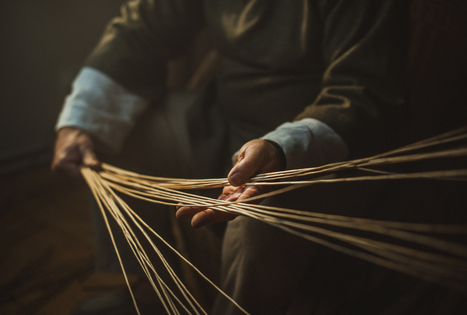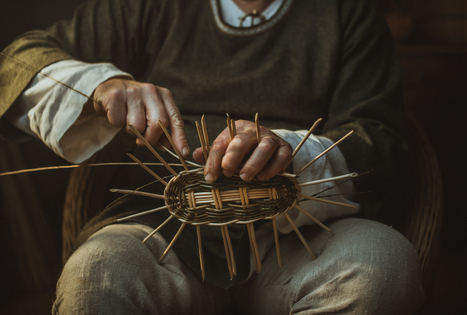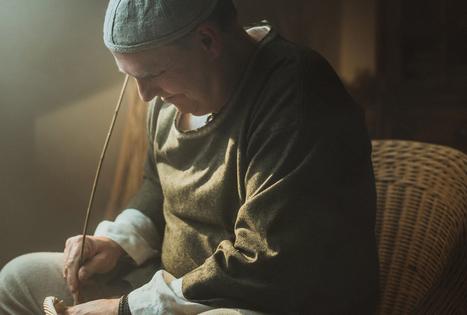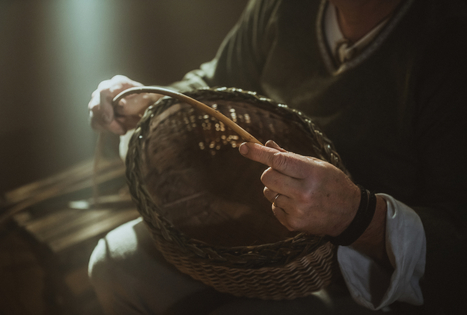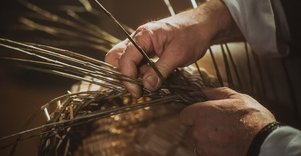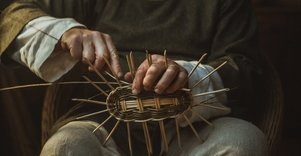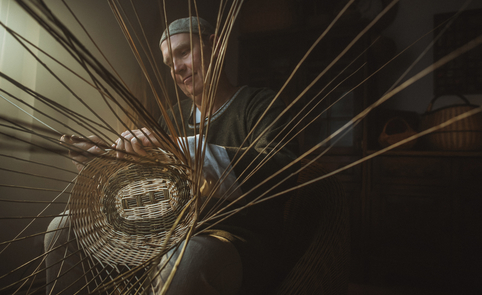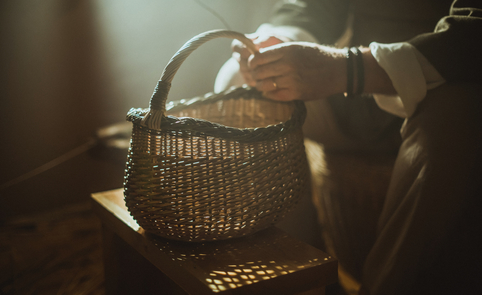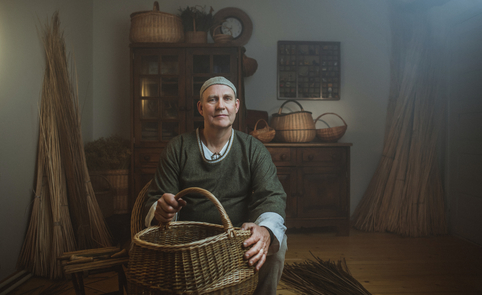Weaving has a unique feature – no matter how hard the weaver tries, it is impossible to weave two completely identical items.
Since time immemorial
Weaving had long been commonplace in warm areas such as Africa, Australia, the Oceanic islands, North and South America. Weaving was used to make parts of clothing, household articles and fishing equipment. Mats, baskets and other practical items were already being woven during the Neolithic period. Many ancient nations also used to weave walls for buildings.
According to archaeologists, the oldest wicker basket was excavated in Faiyum (Egypt). Studies have shown that it may be 10,000–12,000 years old. Two surviving wicker chairs were found in the 14th-century BC tomb of King Tut. The spread of wicker furniture and other household items is evidenced by a carving found in the ruins of Pompeii.
During the Middle Ages, the craft of weaving became popular in Great Britain, France, Germany, the Northern European countries and Russia.
Do you know what a bamblė is?
Weaving has been done in Lithuania since time immemorial. Each village had its own craftsman who wove baskets for everyday life, using special shapes, dimensions and even weaving techniques for the different pieces. They were mainly used for holding potatoes and other vegetables, apples, berries and mushrooms. They also wove sėtuvės (wicker bowls for sowing grain), kretilai (wicker dishes for sifting chaff), doklai (large round baskets for carrying fodder), bamblės (vessels woven from straw for storing flour, grain and hops) and cradles. They used to make special baskets for storing meat and for taking piglets to the market as well. They usually used peeled twigs and roots to weave fancy baskets for women to take to the market or to hold food to be consecrated during Easter. Weavers primarily sold their work at city markets.
At many a Lithuanian farm, you could find a gorčius – an old-fashioned vessel used for measuring grain, and a sėtuvė, which was used to sow grain. Larger baskets called krabės were used by people with no or little land to store grain stocks, while large farmers used to fill them with flour. No farmer could manage without an Aukstaitian underė – a huge basket woven from willow shoots that made it possible to carry hay from the barn to the cattle shed with ease. Older people also used to weave bast shoes for themselves.
Wicker fences were used for fencing in homesteads, gardens, pastures and forest saplings. There were different kinds. Some fences can now be seen at the Lithuanian Open-Air Museum in Rumšiškės. Later, Lithuanians also began weaving furniture, which became popular at estates and parsonages. At the end of the 19th century, wicker furniture workshops appeared as well.
Weaving material from nature
Natural materials that were easy to find were used for weaving: hazel and willow twigs, plėšos (strips peeled from hazel or willow), withies, spruce and pine roots, and rye straw grįžtės (twisted straw). Threshed rye was used for weaving that was only threshed with flails in order to prevent the stalks from breaking; it was then tied with lime bast or hazel sapwood (the outer layer of the wood). In Aukstaitija and Dzukija, pine sapwood was used to make various woven articles. Osier was later grown for weaving on plantations.
A thriving craft even today
Wicker weaving has always had – and still has – a practical purpose, but over time, decorative woven items began to emerge as well. Since the restoration of Lithuanian independence, weavers have been amazing us not only with the creative compositions of their work, but with their purpose as well. They weave all kinds of baskets – from tiny souvenir ones to baskets of impressive size. Wicker cradles and chests, boxes for bedding and laundry, handbags, and baskets for shopping, berry picking, mushroom hunting and other uses are back in fashion. Weavers also make picnic baskets with lids and hot air balloon baskets, and the range of wicker furniture is growing.
Lithuanian weaving stands out for its craftsmanship and excellent quality. The products are not overloaded with patterns and use natural coloured wicker and fibre. Old-fashioned items have become fashionable, so weavers have started to use unpeeled withies. Withies that are dried and soaked again takes on a greenish-pink colour. Items that are woven from this kind of wicker look like they were made a long time ago. They also have a pleasant forest fragrance.
Regardless of how fast technology has evolved and what new technologies and cheap synthetic materials have been developed, weaving has not changed much at all. Just like before, weaving is only done by hand. Each piece of wicker is inspected, selected from a multitude of others, coordinated, and touched numerous times by human fingers. The weaver intuitively selects the thickness of the withies according to the size and purpose of the woven product and composes the individual elements of the weave: layers, twists, plaits, coils, ajoure, etc. A good weaver does not use nails, glue, varnish or paint. Glue and nails are only used for weaving furniture. Those who thought that weaving done exclusively by hand would become extinct were mistaken. Today, there are as many as 78 certified weavers in Lithuania.


